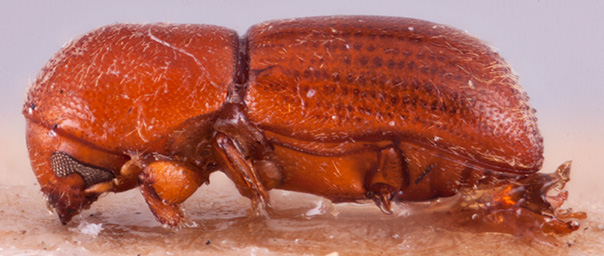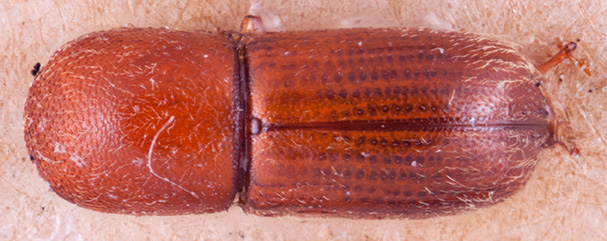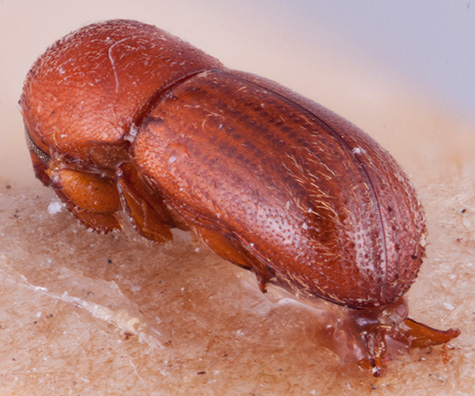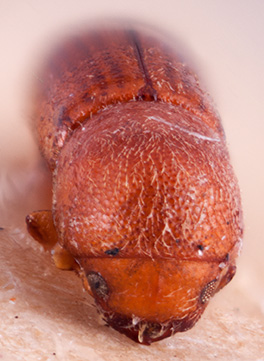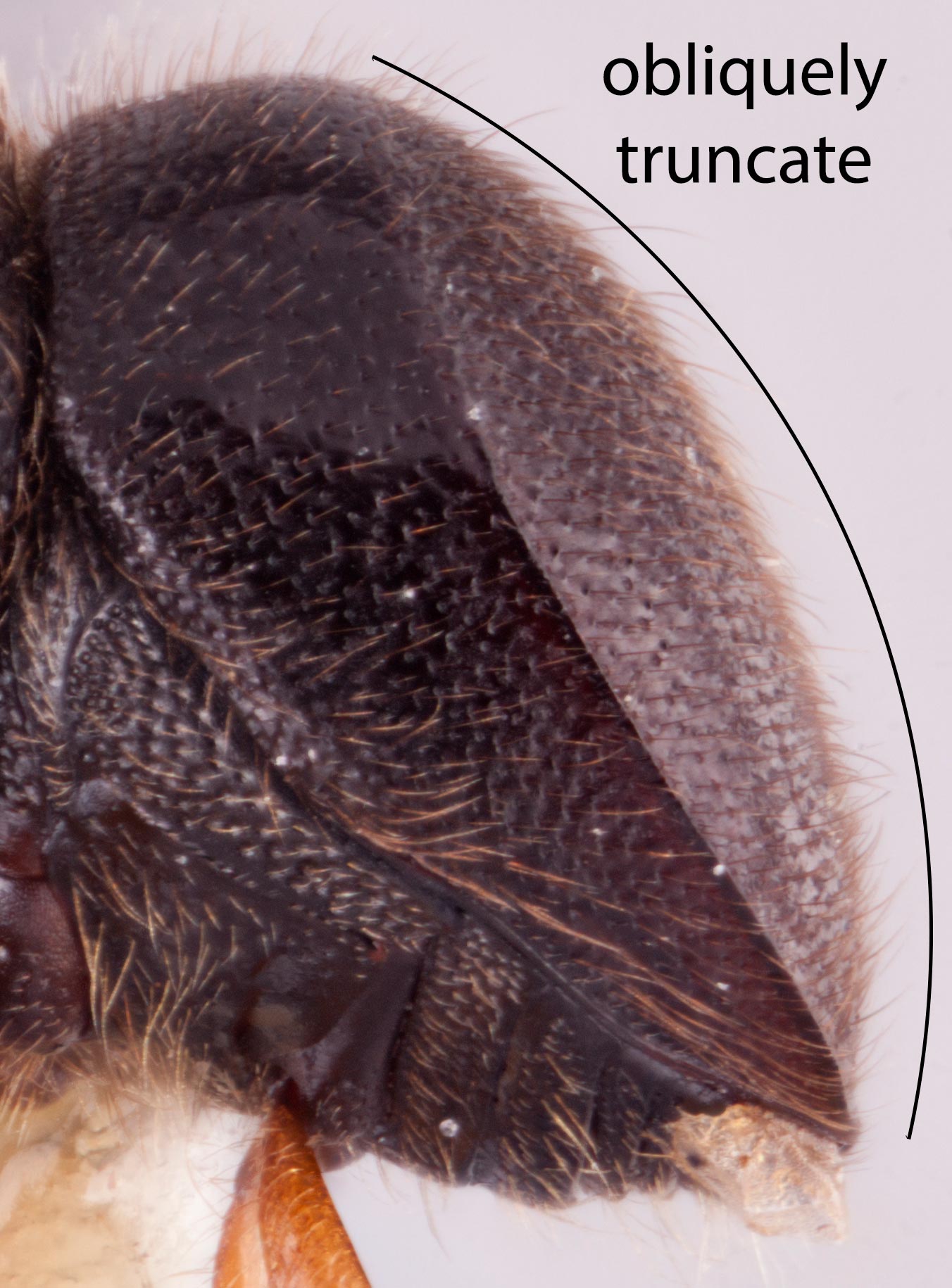Cyclorhipidion inarmatum
|
Cyclorhipidion inarmatum lectotype lateral; R.K. Osborn |
|
Cyclorhipidion inarmatum lectotype dorsal; R.K. Osborn |
|
Cyclorhipidion inarmatum lectotype declivity; R.K. Osborn |
|
Cyclorhipidion inarmatum lectotype frontal; R.K. Osborn |
Taxonomic history
Xyleborus inarmatus Eggers, 1923: 209.
Cyclorhipidion inarmatum (Eggers): Beaver et al., 2014: 39.
Synonyms
Xyleborus vagans Schedl, 1977: 504. Smith et al. 2020b: 188.
Diagnosis
2.8−3.0 mm long (mean = 2.9 mm; n = 3); 2.8−3.0 times as long as wide. This species is distinguished by the short, steep declivitydeclivity:
downward slope of either the pronotum or elytra
 that is approximately 25% of total elytralelytral:
that is approximately 25% of total elytralelytral:
pertaining to the elytra
length, armed with large tuberclestubercle:
a small knob-like or rounded protuberance of the exoskeleton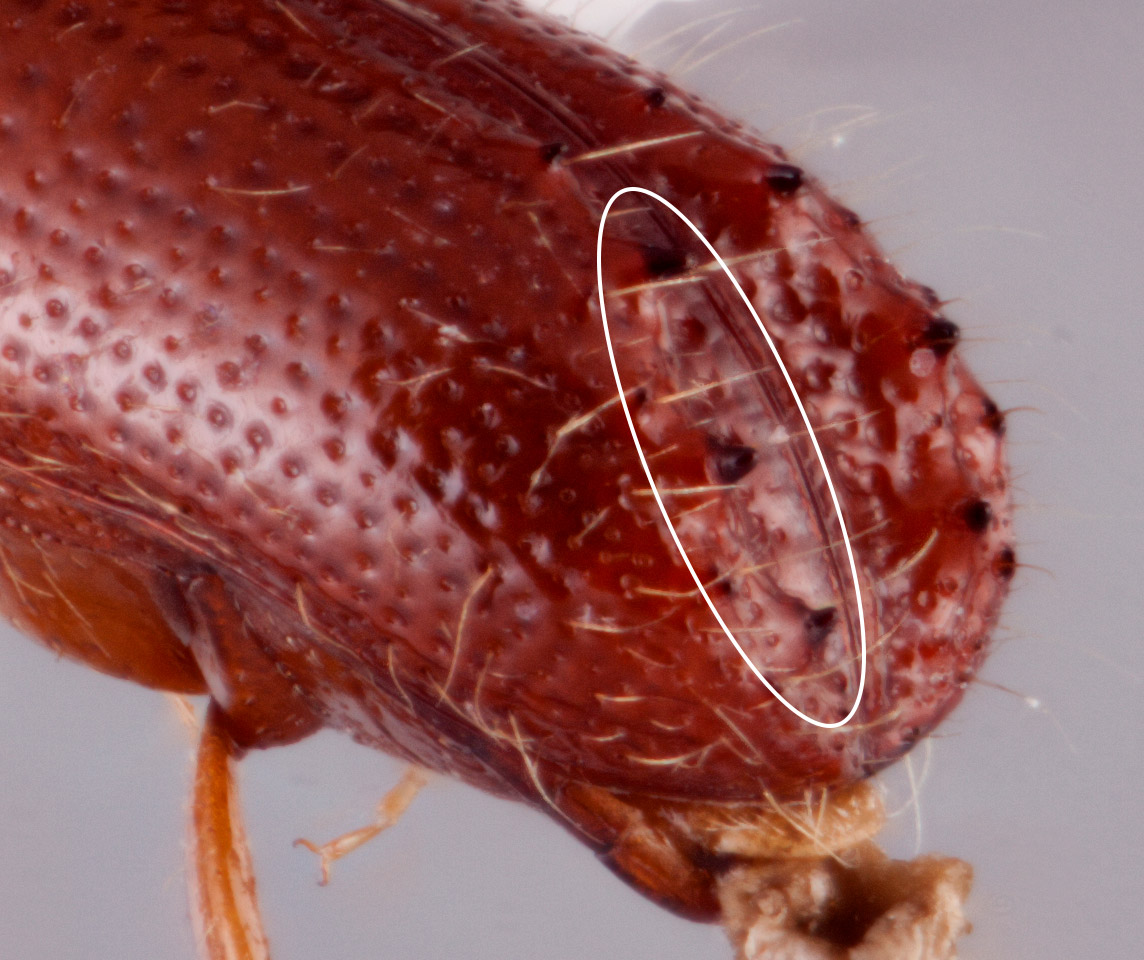 on interstriaeinterstria:
on interstriaeinterstria:
longitudinal spaces along the elytra between the striae, which is not as<br />
impressed and bear smaller punctures.
 1 and 3, interstriaeinterstria:
1 and 3, interstriaeinterstria:
longitudinal spaces along the elytra between the striae, which is not as<br />
impressed and bear smaller punctures.
 2 always unarmed; posterolateralposterolateral:
2 always unarmed; posterolateralposterolateral:
relating to end of the side part/portion
 margins rounded; and declivitaldeclivital:
margins rounded; and declivitaldeclivital:
pertaining to the elytral declivity
interstriae 1 setaeseta:
small hair-like or scale-like structure
in two confusedconfused:
of markings, having indefinite outlines or running together as lines or spots without definite pattern; usually referring to punctures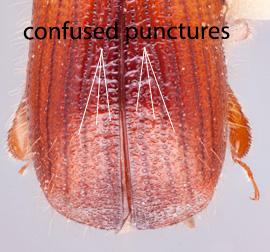 rows, interstriaeinterstria:
rows, interstriaeinterstria:
longitudinal spaces along the elytra between the striae, which is not as<br />
impressed and bear smaller punctures.
 2 setaeseta:
2 setaeseta:
small hair-like or scale-like structure
uniseriate.
May be confused with
This species most closely resembles C. bodoanum, C. cognatoi Lin and Smith, 2022, C. taedulum Smith, Beaver, and Cognato, 2022, and C. tenuigraphum.
This species is a part of the challenging C. pelliculosum species group. Species in the group are most easily distinguished by the rows of setaeseta:
small hair-like or scale-like structure
along declivitaldeclivital:
pertaining to the elytral declivity
interstriae 1and 2. See table below:
|
species |
declivital declivital: |
declivital declivital: |
total body length (mm) |
total body length/width ratio |
lateral lateral: |
interstriae 2 granules |
interstriae 1 & 3 granules |
|
C. achlys Smith, Beaver, and Cognato, 2022 |
3 |
1 |
3.4 |
3.09 |
steeply rounded |
absent |
present |
|
C. beaveri Lin and Smith, 2022 |
1 |
1 |
1.68−1.85 |
2.91−3.05 |
steeply rounded |
present |
present |
|
2 |
1 |
1.6−2.4 |
2.5−3.29 |
steeply rounded |
absent |
present |
|
|
2 |
2 |
2.2 |
3.14 |
steeply rounded |
absent |
present |
|
|
C. cognatoi Lin and Smith, 2022 |
2 |
1 |
2.95−3.28 |
2.82−2.93 |
steeply rounded |
absent |
present |
|
3 |
2 |
2.5−3.11 |
2.6−3.0 |
steeply rounded |
absent |
present |
|
|
C. inarmatum |
2 |
1 |
2.75−3.0 |
2.75−3.0 |
steeply rounded |
absent |
present |
|
1 |
1 |
2−2.2 |
2.75−3.07 |
steeply rounded |
absent |
present |
|
|
3 |
1 |
3.2−3.5 |
2.67−3.0 |
steeply rounded |
rare, on basalbase: |
present |
|
|
C. taedulum Smith, Beaver, and Cognato, 2022 |
2 |
1 |
2.7 |
3 |
steeply rounded |
absent |
present |
|
2 |
2 |
2.7−3.0 |
2.5−3.0 |
steeply rounded |
Often on apicalapex: |
present |
|
|
2 |
1 |
2.92−3.47 |
2.78 |
steeply rounded |
absent |
absent |
|
|
1 |
1 |
1.65−1.8 |
3.09−3.4 |
obliquely truncateobliquely truncate: |
absent |
present |
Distribution
Bhutan, China (Yunnan), India (Himachal Pradesh, West Bengal), Indonesia (Sumatra), Laos, Myanmar, Nepal, Thailand, Vietnam
Host plants
recorded from Castanopsis and Quercus (Fagaceae), and probably with a close association with Fagaceae (Beaver et al. 2014Beaver et al. 2014:
Beaver RA, Sittichaya W, Liu L-Y. 2014. A synopsis of the scolytine ambrosia beetles of Thailand (Coleoptera: Curculionidae: Scolytinae). Zootaxa 3875: 1-82. http://dx.doi.org/10.11646/zootaxa.3875.1.1)
DNA data
Sequences available for COI and CAD.
COI: OP617818
CAD: OP607254

